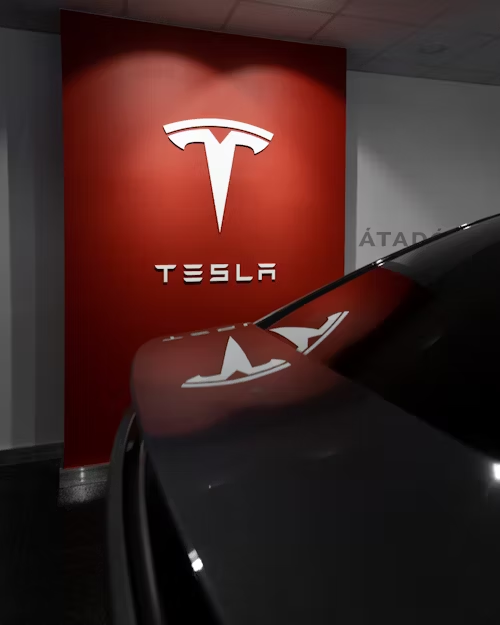Tesla’s European Sales Nosedive: A Wake-Up Call Amidst Rising Competition

In a surprising yet telling development, Tesla’s sales in Europe plummeted by 52% year-on-year in April 2025, a stark contrast to the overall growth of the electric vehicle (EV) market in the region. While the broader EV industry in the EU grew by 26.4%, Tesla’s decline signals deeper issues at play — from brand perception and leadership scrutiny to fierce competition from new entrants, especially Chinese automakers.
This blog delves into the reasons behind Tesla’s performance dip, the rise of competitors like BYD, and what this could mean for the future of the EV landscape in Europe.
Tesla’s April Crash in Numbers
- 52% decline in year-on-year sales in April 2025
- Market share shrinking in key countries like Germany, France, and the Netherlands
- Decline occurred despite EV market growth, which saw battery-electric vehicle (BEV) sales increase 26.4% across the EU
What’s Driving Tesla’s Decline?
1. Leadership and Brand Image Challenges
Tesla’s CEO, Elon Musk, remains a polarizing figure. His erratic behavior on social media and controversial political statements have drawn criticism across the globe, particularly in Europe, where environmental and ethical values play a strong role in consumer decisions.
Impact: Several reports and consumer sentiment analyses suggest that Musk’s personal reputation is directly affecting brand loyalty in Europe, with some buyers switching to brands perceived as more ethically aligned or less controversial.
2. Aggressive Chinese Competition
Companies like BYD (Build Your Dreams), NIO, and XPeng have aggressively entered the European EV market. BYD in particular has captured attention with cost-effective models that offer high tech, long range, and safety features — all at a more affordable price than many of Tesla’s models.
| Company | Competitive Edge | Example Models |
|---|---|---|
| BYD | Lower cost, strong battery tech (Blade Battery) | Seal, Dolphin |
| NIO | Battery swapping stations | ET5, ES8 |
| XPeng | Advanced driver-assistance systems | P7, G6 |
Impact: Chinese brands are reshaping EV pricing and value benchmarks in Europe. Consumers now have more affordable alternatives to Tesla without compromising quality.
3. Local and Legacy Automaker Push
European giants like Volkswagen, BMW, Mercedes-Benz, and Renault are heavily investing in electric vehicle production. These legacy automakers have:
- Established dealership networks
- Strong post-sale services
- Trust built over decades with European consumers
Impact: With increasing production of EVs like the Volkswagen ID.4, BMW iX3, and Mercedes EQE, local options have never looked more attractive to buyers.
4. Policy and Tariff Tensions
In recent months, there has been political tension over trade and tariffs between the EU and the U.S. Tesla, being a U.S.-based automaker, is not immune to these fluctuations.
- EU considered imposing higher tariffs on U.S. EVs to counterbalance subsidies and protect local production
- Though a temporary delay in tariff hikes has eased pressure, uncertainty still looms
Impact: Dealerships and consumers are wary of price increases, supply issues, and regulatory hurdles — factors that may influence brand decisions.
Consumer Behavior is Evolving
Tesla once enjoyed a near-monopoly in the EV segment due to its tech appeal, range, and autopilot features. But the “first mover advantage” is no longer enough. Today’s EV buyer in Europe is:
- More value-conscious
- More climate-conscious
- Prefers brands that reflect ethical, local, or stable leadership
Tesla’s minimalist interiors and software-focused approach still appeal to many, but new market entrants are catching up quickly on both tech and appeal — sometimes at better prices.
What’s Next for Tesla in Europe?
Opportunities
- Tesla can recover with localization, such as by increasing European Gigafactory output (Berlin) and tailoring features for EU preferences.
- Strategic price adjustments and the rumored Model 2 (budget Tesla) may help regain market share.
- Enhanced service infrastructure and better engagement with EU policymakers may help mend perception.
Risks
- Continued negative press around leadership
- Growing brand fatigue in a saturated market
- Regulatory disadvantages as Chinese and European firms align with local environmental laws more tight
Tesla’s 52% drop in European sales is not just a number — it’s a warning. The electric vehicle landscape is rapidly shifting, and brand prestige alone is no longer enough. As competition tightens and consumers evolve, Tesla will need to do more than iterate on its cars — it must rebuild trust, reassess its strategy, and re-engage the European market on its terms.
Only time will tell whether this is a short-term slump or a long-term shift in the EV hierarchy.







